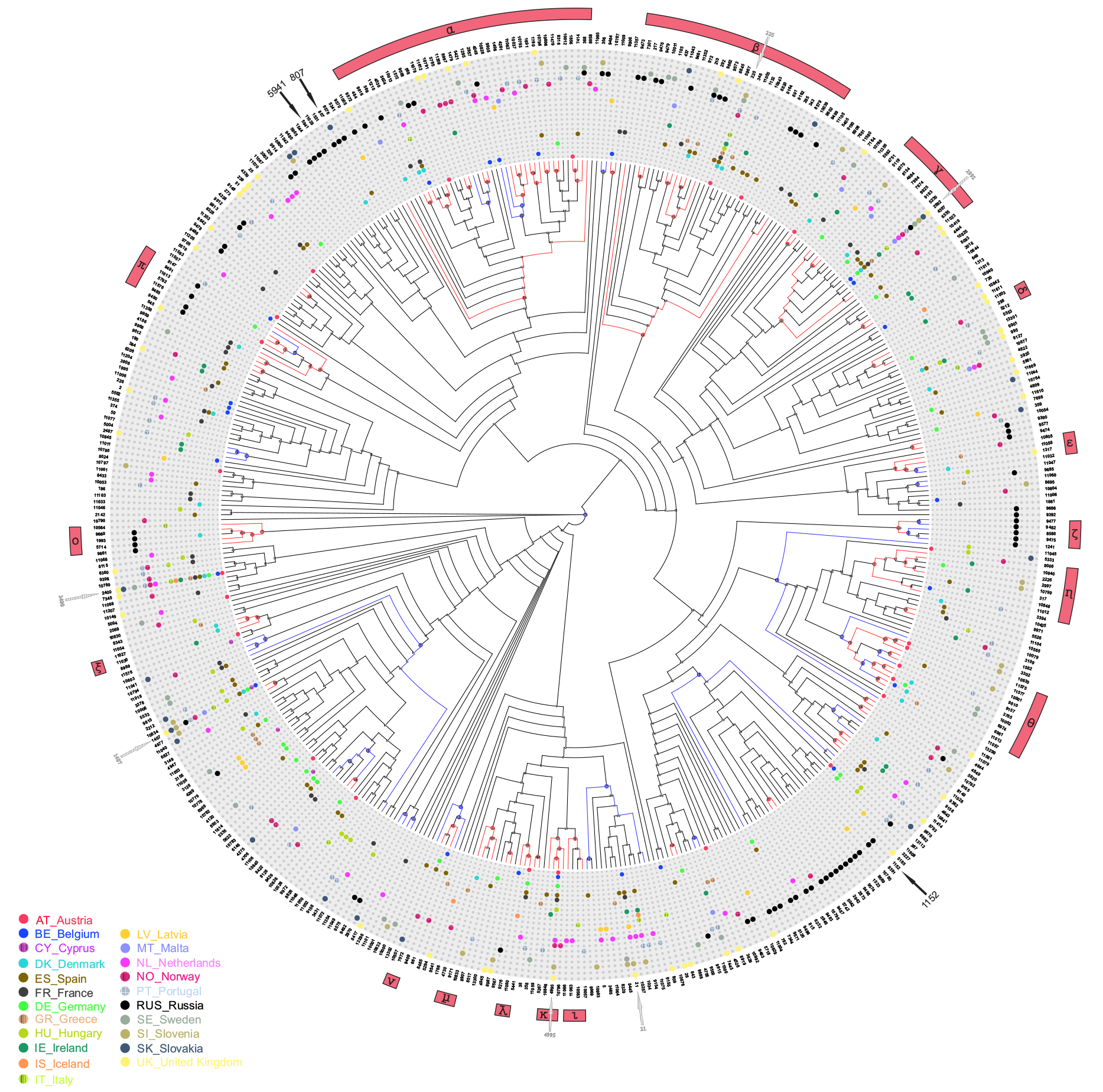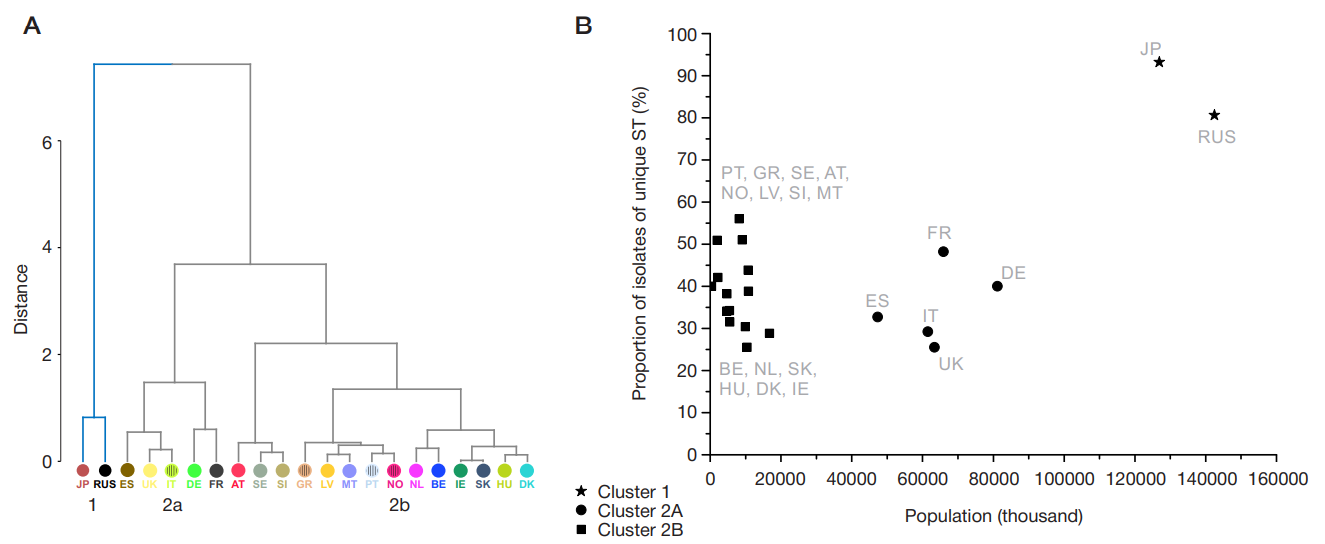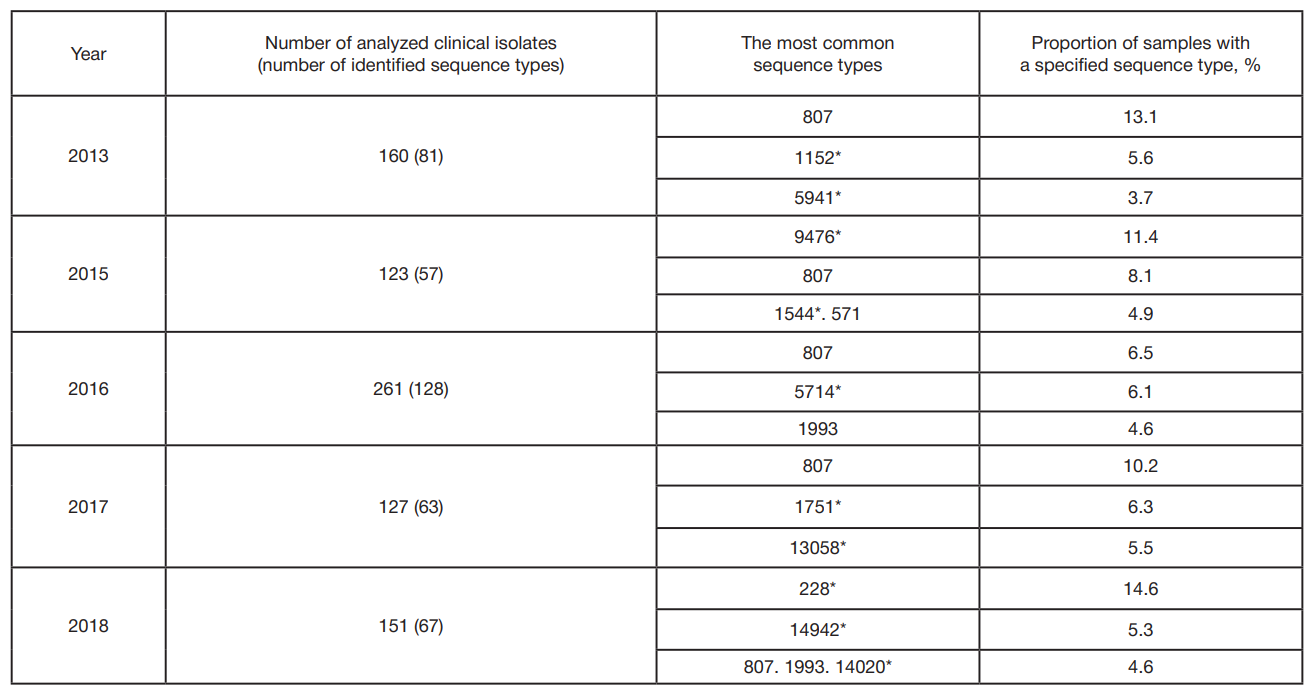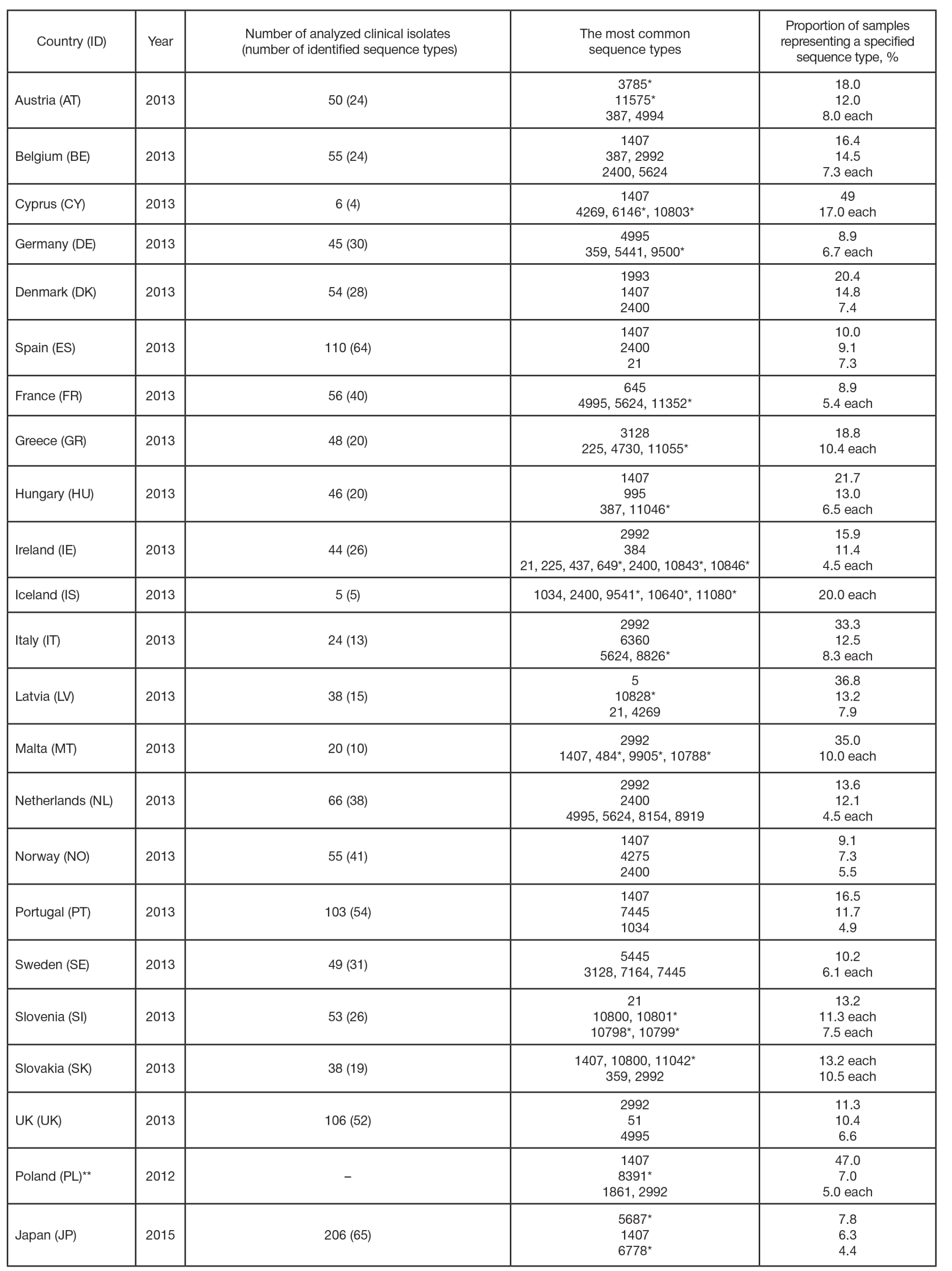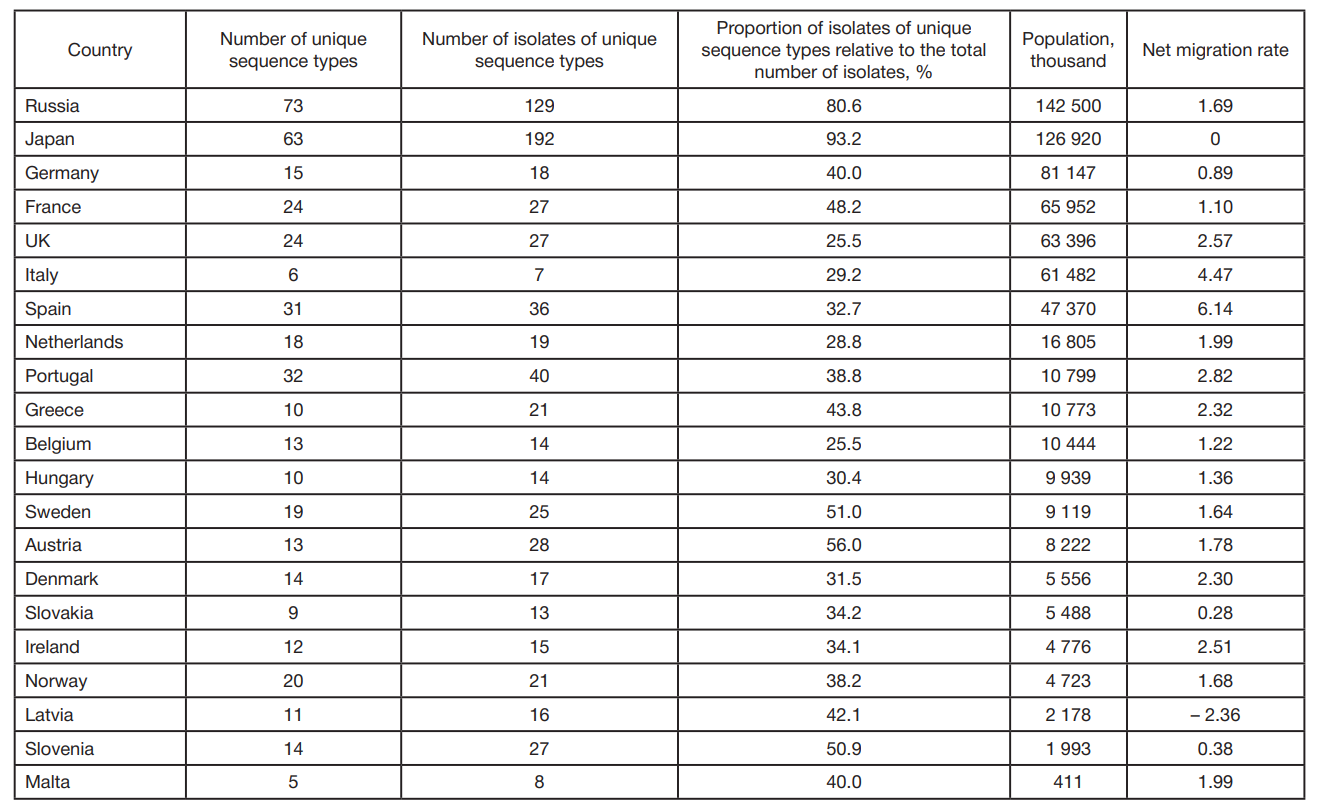
This article is an open access article distributed under the terms and conditions of the Creative Commons Attribution license (CC BY).
ORIGINAL RESEARCH
Comparative phylogenetic analysis of Neisseria gonorrhoeae clinical isolates in Russia, European Union, and Japan
1 Center for Precision Genome Editing and Genetic Technologies for Biomedicine, Engelhardt Institute of Molecular Biology, Russian Academy of Sciences, Moscow, Russia
2 State Research Center of Dermatovenerology and Cosmetology, Russian Ministry of Health, Moscow, Russia
Correspondence should be addressed: Boris L. Shaskolskiy
Vavilova, 32, Moscow, 119991;
ur.pihcoib@yiksloksahs.b
Funding: the study was supported by the Russian Science Foundation (Project 17-75-20039 on the assessment of genetic diversity of sequence types) and the Ministry of Science and Higher Education of the Russian Federation (Agreement № 075-15-2019-1660 on the collection and verification of clinical isolates and the establishment of the association between the unique sequence types and the population size). The isolates were sequenced at the facilities of the Genome center for collective use (Engelhardt Institute of Molecular Biology; http://www.eimb.ru/ru1/ckp/ccu_genome_c.php).
Compliance with ethical standards: the study was approved by the Ethics Committee of the State Research Centre of Dermatovenerology and Cosmetology (Protocol № 11, dated November 29, 2019). Specimens were collected in compliance with the Declaration of Helsinki (2000) and the European Convention on Human Rights and Biomedicine (1999).
Author contribution: Shaskolskiy BL, Dementieva EI, Kandinov ID carried out the study, analyzed the data and wrote the manuscript; Gryadunov DA supervised the study and wrote the manuscript; Chestkov AV, Solomka VS, Kubanov AA, Deryabin DG collected and verified clinical isolates, analyzed the obtained data.
